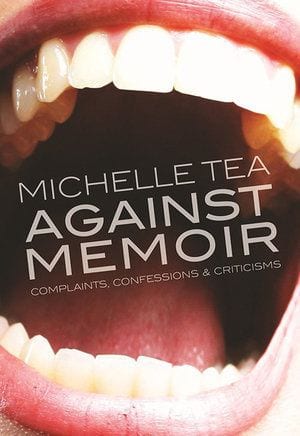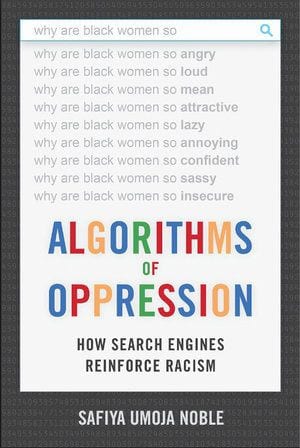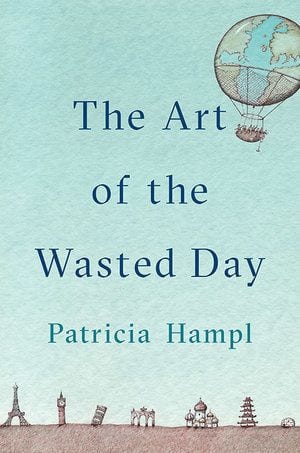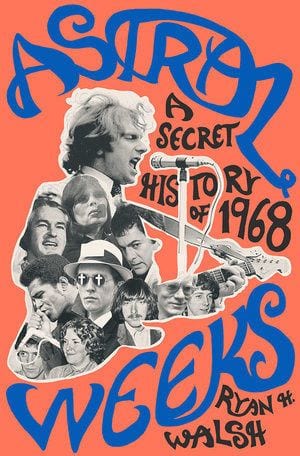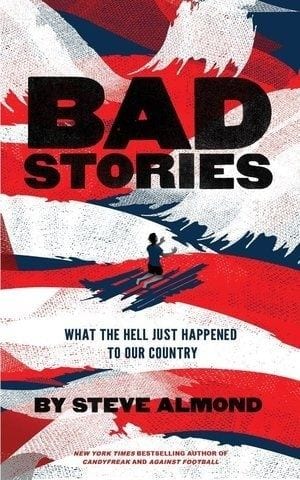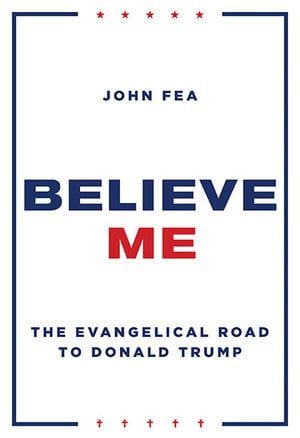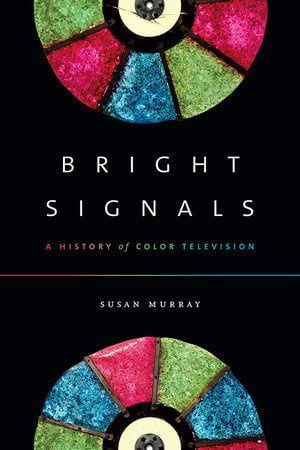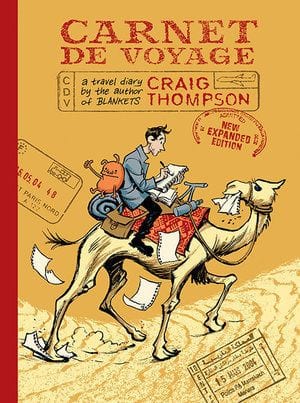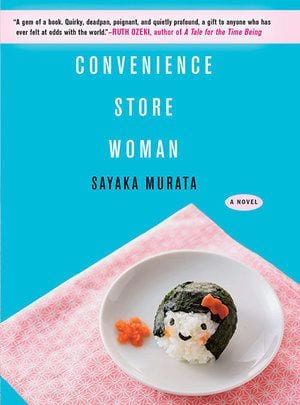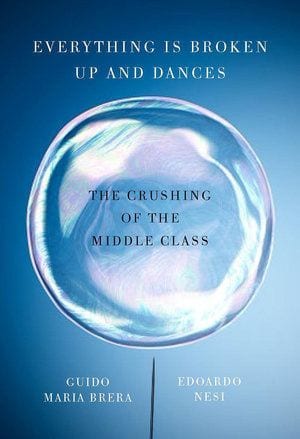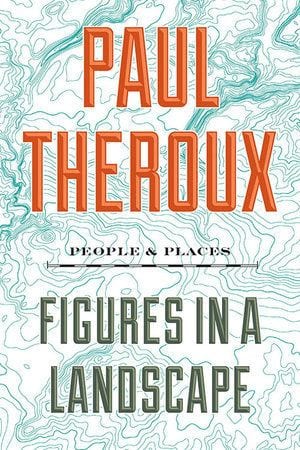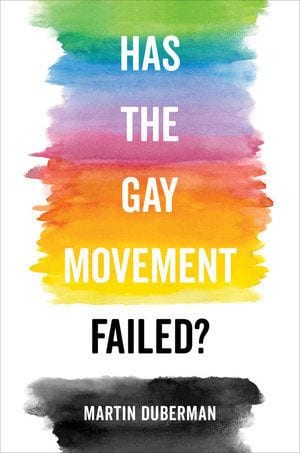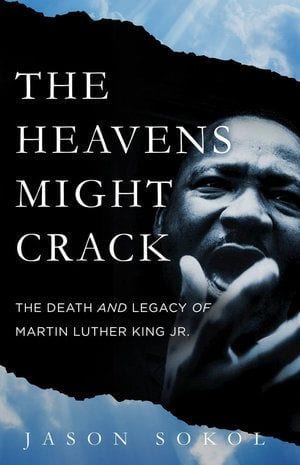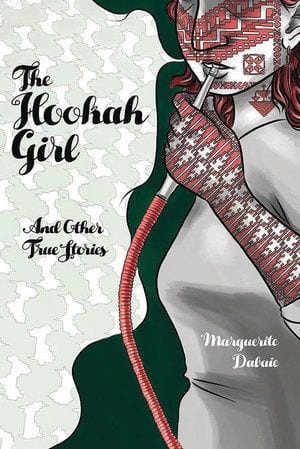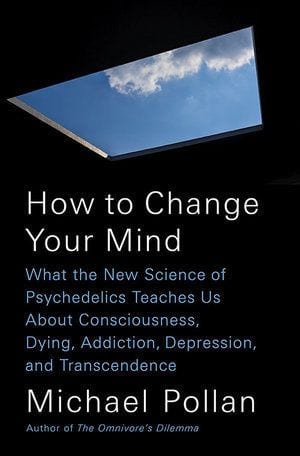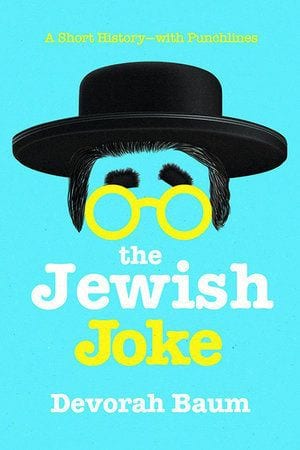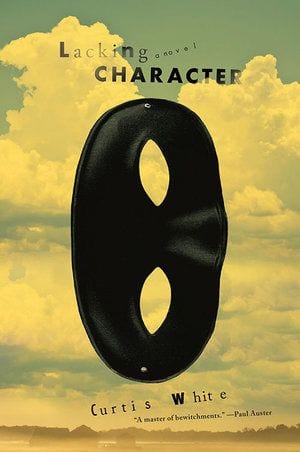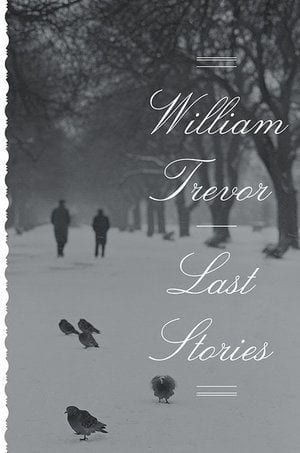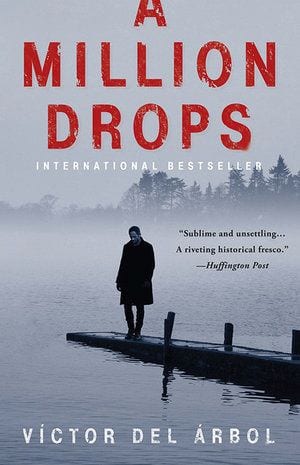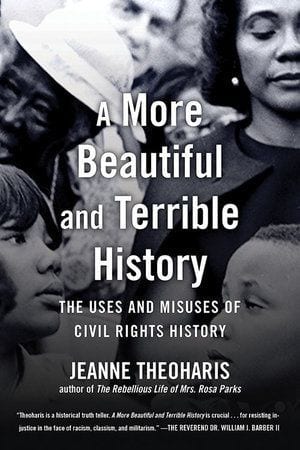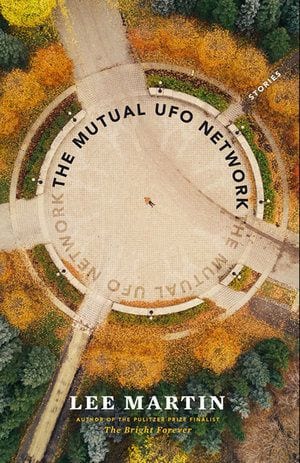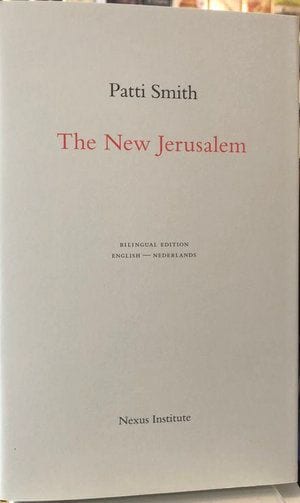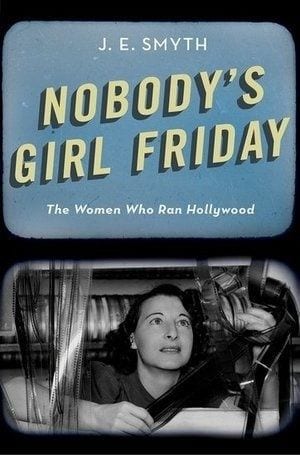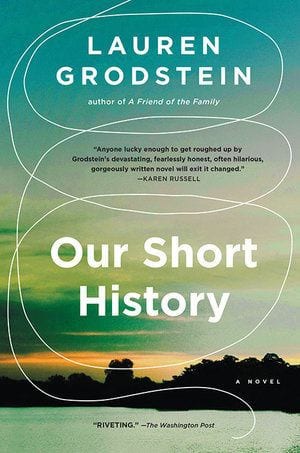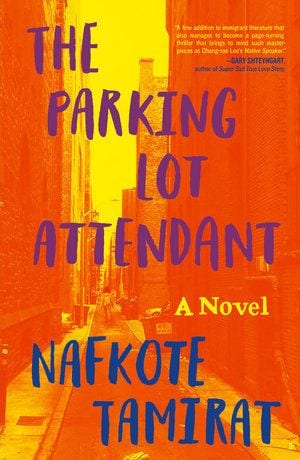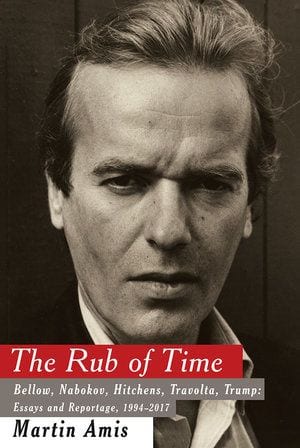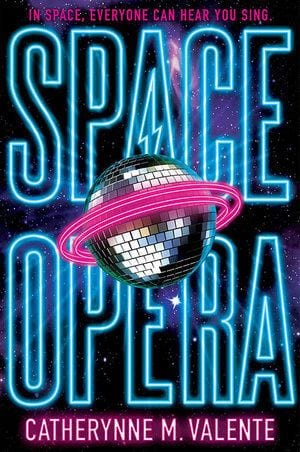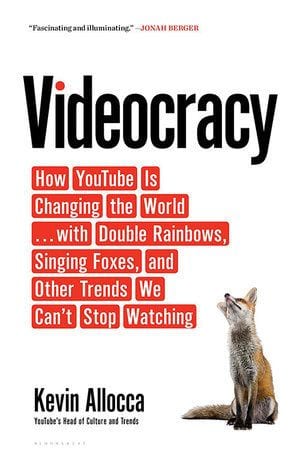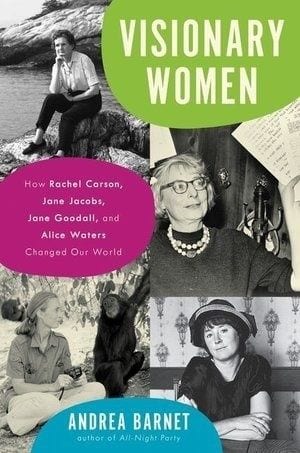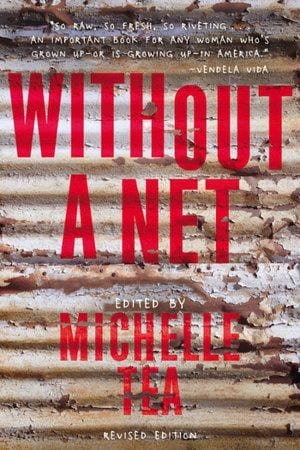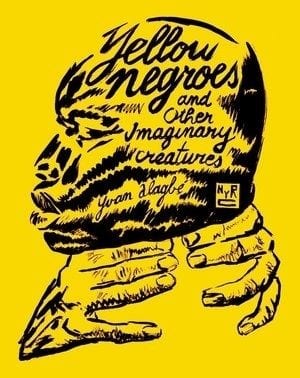Against Memoir: Complaints, Confessions & Criticisms by Michelle Tea
Michelle Tea doesn’t yet have enough literary laurels to be recognized by the mainstream media, but she’s clearly not resting on what laurels she does have. The newer parts of Against Memoir show how she pushes herself and explores different avenues in her work. There’s a weird three pages on pigeons that reminds us she is still very much a poet. This book is divided into three sections—art and music, love and queerness, writing and life—and yet obviously, everything Tea publishes is infused with these concepts. She knows herself. She reports on herself in a strangely accurate manner that should not necessarily fall easily into the category of memoir. She keeps one finger on the same few threads, no matter the individual style or substance of any single piece of writing. Indeed, she’s aging well, and for her steadfastness in these matters she will someday be rewarded. She’ll have got there not by selling out, but by winning the war of attrition—because attitude is a renewable resource. Some day, Tea is going to step in and fill the void: that very lonely captain’s chair on the constantly embattled and leaky mothership of queer feminism that one cannot sit in until all the badges have been collected. Against Memoir is one of those badges. – Megan Volpert
Algorithms of Oppression: How Search Engines Reinforce Racism by Safiya Umoja Noble
There’s been a growing swell of concern in the academic community about the stranglehold that commercial (for-profit) search engines have over access to information in our world. Safiya Umoja Noble builds on this body of work in Algorithms of Oppression: How Search Engines Reinforce Racism to demonstrate that search engines, and in particular Google, are not simply imperfect machines, but systems designed by humans in ways that replicate the power structures of the western countries where they are built, complete with all the sexism and racism that are built into those structures. – Hans Rollmann
Apocalypse, Darling by Barrie Jean Borich
There’s a sweeping, gorgeous sense of urgency in these pages as Barrie Jean Borich reflects on the physical and psychic deterioration of lands and their people. We are the same. Rather than being hopeless and bitter, though, which this could have easily become,Apocalypse, Darling, is a stunning testament to the power of prayer and testimony to tell the tale and move on. There is no linear complacency here, no standard beginning, middle, and end, but it’s not replaced by chaos for the sake of art. By the time it’s over, Apocalypse, Darling proves an admirable balance of doom and grace in a world where darkness seems eternal if we stop reading, stop searching, stop believing. – Christopher John Stephens
The Art of the Wasted Day by Patricia Hampl
The Art of the Wasted Day shimmers and glows as it takes the reader through countries, time zones, centuries, almost like the title heroine of Virginia Woolf’s Orlando, a superhuman who changes genders and wanders through centuries, meeting the best and the brightest minds of various times and taking a little here, a little there, always living on her own terms. Where Orlando intermingled with these characters, Patricia Hampl maintains the graceful nature of a solitude that keeps her in the world but never of it. Hampl has given birth here to a beautiful, stunning, intense look at the graceful and sublime responsibilities of a writer who understands the difference between romanticizing loneliness and elevating the literary obligation to craft, solitude, and truth in our allotted time between birth and death. – Christopher John Stephens
Astral Weeks: A Secret History of 1968 by Ryan H. Walsh
Ryan H. Walsh’s Astral Weeks: A Secret History of 1968 is a brilliant, beautiful tribute to a long-lost era of free-form radio, communal living, underground newspapers, burgeoning musical scenes in their pristine form before being captured by the “star making machinery”, and the birth of a visionary album by a 22-year-old Irish singer/songwriter that remains terrifying in its untouched beauty. Walsh understands there are many characters to consider but he maintains (to take another Van Morrison title) a “beautiful vision” from beginning to end. This book is a masterful end result of research, patience, and love for a time and sensibility sorely missing today. – Christopher John Stephens
Bad Stories: What the Hell Just Happened to Our Country by Steve Almond
Steve Almond has written a handful of books about things like music or sports. All of them are pretty funny and surprisingly touching. He comes off as a mensch every time. Wading into the swamp of our contemporary political discourse to sift through the muck of the American mythos, he has emerged with Bad Stories to guide us all toward a more useful approach to the national nightmares we face when we turn on the television these days. Almond reminds us that storytelling itself is a necessarily redemptive enterprise, and urges us to consider that our moral progress as a nation is still completely possible, even if it’s inconvenient. – Megan Volpert
Believe Me: The Evangelical Road to Donald Trump by John Fea
Believe Me is a highly readable and convincing “story of why so many American evangelicals believe in Donald Trump”. The book tracks through recent developments in US religion and politics, but does so in the context of longer historical developments and patterns. Fea talks about the rise of the Moral Majority with as much ease as he does Jeffersonian America, all developing a single line that greatly expands understanding of our current political moment. His own faith may lend an urgency to his work, but it won’t turn off secular readers. He tackles the topic “not as a political scientist, pollster, or pundit, but as a historian who identifies as a Christian”. – Justin Cober-Lake
Bright Signals by Susan Murray
Considering that television became commonplace in US households after WWII, it’s difficult to imagine that the first public demonstration of color television occurred way back in 1925. Developing color television, from this side of history, seems like an inevitability, yet in Bright Signals, Susan Murray shows that it was anything but. At the heart of Murray’s study is the consideration of color far beyond simply a mechanical or technological event that happened in the consumption of everyday media. — Linda Levitt
Bring the War Home: The White Power Movement and Paramilitary America by Kathleen Belew
In Bring the War Home, Kathleen Belew, a history professor at the University of Chicago, offers a convincing case for the claim that the “lone wolf” domestic terrorist, an all-too-familiar figure in the United States, is instead a product of a well-organized, decades-old, right-wing social movement that brings together “a wide array of groups and activists previously at odds”, including Klansmen, skinheads, neo-Nazis, militiamen, Christian identitarians, tax protesters, and white separatists. From the late ’70s onward across the US, white extremists built a vast underground movement. Collectively, Belew deems them the “white power movement” who, as a group, “believe in a racial nation that would be transnational in scope… based on the belief that white people are the chosen people.” – Keira Williams
Calypso by David Sedaris
Calypso has arrived at the perfect moment as a literary equivalent of the recent wave of prestige comedies—shows like Transparent, BoJack Horseman, You’re the Worst, Barry, Louie—that are comedies in name only, because the star actors are those we associate with comedy, and the format fits into the half-hour television slot, we sort them into the category of comedy. The essays in Calypso follow a similar model. They’re comedic because they’re in that familiar essayistic format by noted humorist David Sedaris, but at their core they’re as melancholy as anything he’s ever written. The sharpness and exaggerated pettiness of his earliest books are all but gone, replaced with a gentler sort of wryness that, one assumes, comes with the wisdom of middle age and experience. When a David Sedaris story made you feel wistful, it used to be the exception; in Calypso, it’s the rule. – Deborah Krieger
Carnet de Voyage by Craig Thompson
Craig Thompson’s Carnet de Voyage, a travel diary of his time spent in Europe and Morocco in 2004, is filled with sketches of the people and places he encountered along the way. Thompson makes it clear that this diary is composed of quick snapshots and sketches, without the use of photographs, and the looseness of the drawings comes through beautifully. Thompson is a gifted cartoonist, with an ability to tell long, complex stories while never sacrificing intricate details or the fluidity of his drawings. Here, his sketches still manage to convey those same skills, while retaining an on-the-fly quality that works especially well for the genre. – J.M. Suarez
Convenience Store Woman by Sayaka Murata
Sayaka Murata’s theme, rendered through the trappings of the contemporary moment — cell phones, convenience stores, social media — appears modern but actually taps into a deeper and eternal universality: the solitary individual’s struggle to come to terms with a society that demands total, mindless conformity to its norms as the price for sharing in its fruits. It’s a price that is paid more easily by some than by others, and Murata’s brief, whimsical, deeply insightful and pleasantly thought-provoking novel reminds us what torture social life can be for those too honest and authentic to be deluded by its trappings. – Hans Rollmann
Elements of Surprise: Our Mental Limits and the Satisfactions of Plot by Vera Tobin
In our daily lives, many of us are not too keen, even circumspect, about the sudden surprises we encounter. Yet, with the fictions we read/watch, as Vera Tobin points out in her recent book Elements of Surprise, we take pleasure in and gain satisfaction from narrative surprises. Though the O. Henry style twist endings are no longer as popular as during his time, readers/audiences today still prefer narratives that adhere to the paradox of being inevitable (that is, a consequence of all that has gone on before) and yet unpredictable. Not cheap, formulaic plot tricks, mind you, but the “well-made” surprise. With this book, Tobin takes a scientific approach to exploring this kind of surprise in fiction (of all genres.) Specifically, she looks at our cognitive limits and quirks that not only help make such surprises work effectively but also elicit a certain kind of pleasure and satisfaction when revealed, recognized, understood, and acknowledged. – Jenny Bhatt
Eventide by Therese Bohman
Therese Bohman’s works are grounded deep in the souls of the women she portrays. For a novel which largely explores the feelings and experiences of a single woman, there’s nothing stilted or laborious about it; the prose is light and engaging and draws the reader in with a desire to understand its central character and to see how she engages with the unpredictable turns of her life. Eventide is a lovely and compelling depiction of a very complex, very real woman, and despite its brevity and uniformity of purpose, it’s a highly rewarding read. – Hans Rollmann
Everything Is Broken Up and Dances: The Crushing of the Middle Class by Edoardo Nesi, Guido Maria Brera
Edoardo Nesi and Guido Maria Brera are classic liberals. They believe the free market works, that minimal regulation is good, that ultimately penny-pinching efforts by governments to get out of debt can be a good thing. Brera is an investment manager; Nesi inherited a textile manufacturing company, which he was ultimately forced to sell, and more recently pursued a career as an award-winning author and politician. The fact that it comes from two stalwart believers in traditional liberal, socially-conscious capitalism makes their savage attack on its globalized, neoliberal offspring somehow all the more satisfying. Everything is Broken Up and Dances is almost poetic in its straightforward denunciation of the double-speak of contemporary bankers and politicians, of their bureaucratic insulation from the first-hand cruelty of the austerity politics they practice. – Hans Rollmann
Figures in a Landscape: People and Places by Paul Theroux
Figures in a Landscape is Paul Theroux’s third collection of essays that have already appeared, from 2001-2016, in slightly different forms in various publications (The Washington Post, Harper’s Bazaar, The Guardian, The Smithsonian, New York Times Magazine, etc.) or as book introductions. With travel pieces, literary critiques, people profiles, and personal essays, the 30 pieces here cover a wide range of subjects and are, together, his most polished collection yet. They give us everything we have come to expect from Theroux in his nonfiction: the attentive traveler’s sharp eye and canny ear for everything that goes on around him and, to a certain extent, what goes on in his mind as he engages fully with life and everything that comes at him. Whether he’s being seriously earnest or ironically satirical, Theroux’s prose manages to hit just the right notes so that, at the end of any particular essay, even if we might not be in agreement, we want him to continue on. – Jenny Bhatt
Flash: The Making of Weegee the Famous by Christopher Bonanos
Christopher Bonanos’ impeccably researched biography of Weegee is also a history of newspaper photography and of the growth of New York City through the middle years of the 20th century. Weegee was already making photographs and trying to figure out how to make photography his career when the first tabloid, the New York Daily News, began in 1919 with the intent of making its mark by visually representing the news. Bonanos offers a lively history of the early years of news photography, rich with anecdotes that create Weegee’s persona. In these times of so-called “fake news”, this biography of Weegee begs the question: If the truth of human nature is best demonstrated in a prearranged circumstance, does that make it any less true? – Linda Levitt
Has the Gay Movement Failed? by Martin Duberman
Martin Duberman’s argument is not so much that the gay movement has failed, as that it needs to re-focus and set its sights on a more radical agenda, particularly one that attends to the needs of poor and marginalized queer folk, which is to say the majority. Insofar as the most visible national LGBTQ organizations have pursued an almost desperately centrist agenda (even to the point of backing Republican candidates in recent elections), some might consider this a call to return to the movement’s roots, but Duberman is quite sober in his analysis of the ways that societal attitudes have changed since the ’60s, and that a re-radicalization of the movement cannot simply aim to replicate the activism of those decades. – Hans Rollmann
The Hatred of Literature by William Marx
Those who come to this book seeking validation of their negativity towards the written word will be sorely disappointed. Rather than examine a particular antipathy towards a specific form, William Marx examines how the fear of ideas inherent in all literary forms, be it Plato through C.P. Snow, has served only to build up a hatred of the form in general. We hate what we fear, and we reach that state of apprehension because it comfortably serves our immediate interests. Willful ignorance has always been a more comfortable and popular state than that of an academic, than the life of a pilgrim on a quest for the truth. We have always hated literature while at the same time we hold it at a safe distance. Confuse this hatred of literature with illiteracy and the picture gets hazy. – Christopher John Stephens
The Heavens Might Crack: The Death and Legacy of Martin Luther King Jr. by Jason Sokol
As we enter the third quarter of 2018, mid-term elections, an increasing sense of divisiveness through race, economic disparities, and the looming specter of war anywhere and everywhere as a means of distraction, Sokol’s The Heavens Might Crack should serve as a critical reminder of what Americans are capable of. This work is an important addition to an already impressive library of civil rights narratives and Martin Luther King biographies. King was a monolith of a man in his time and remains so today, but he was also a rebel, a necessary disrupter, a thorn in the feet of all who stood in his way, and any reminder of that should help us deal with the dark times ahead. – Christopher John Stephens
The Hookah Girl by Marguerite Dabaie
No, The Hookah Girl is not a graphic novel about smoking hash in hookah bars and hooking up with “exotic” belly dancers. It’s an intentionally scattered memoir in comic strip form of a childhood and young adulthood navigating the cultural hazards of growing up Palestinian in the US. Marguerite Dabaie is also a talented artist, who portrays herself and her family in an evolving array of styles that creates an underlying instability to her micro-narratives. While most of her renderings are simplified in a cartoon-sense, they vary between exaggerated caricatures and stripped-down naturalism, an appropriate stylistic span for a fragmented memoir about her own shifting identity. Even her page’s frames and gutters are unstable, sometimes decorative, sometimes solid black, sometimes open—further reflecting the memoir’s lack of a baseline reality. – Chris Gavaler
How Democracies Die by Steven Levitsky and Daniel Ziblatt
How do democracies die? How do we prevent them from collapsing? How far down the path of democratic collapse has the United States slid? These are the questions posed by political scientists Seven Levitsky and Daniel Ziblatt in their study How Democracies Die. It’s a grim prognosis. Drawing on the work of political scientist Juan Linz and others, they develop a four-part test for identifying threats to democracy. The four key indicators of authoritarian behaviour, they argue, include rejection of (or weak commitment to) the democratic ‘rules of the game’; denial of the legitimacy of political opponents; toleration or encouragement of violence; and readiness to curtail civil liberties of opponents, including the media. It’s a useful model and, as they also demonstrate, Donald Trump’s administration fails the test on all counts. – Hans Rollmann
How to Change Your Mind by Michael Pollan
Beloved and awarded food writer, Michael Pollan, has a new book on psychedelics. This is especially interesting because he’s known for immersing himself in his subject, and the idea that a highly respected professor would take a variety of illegal drugs so he can tell the rest of us what we’re missing is a pretty enticing project. It seems like the majority of Pollan’s readership has probably not had a great deal of personal experience with acid, ayahuasca or magic mushrooms—let alone smoked the toad. If good psychedelic trips are truly wasted on the young, as it’s often said, then Pollan is perhaps exactly the right guy to help kick off a new wave of popular interest in these drugs. A resurgence of attention to psychedelics has already begun in earnest in several corners of the scientific world, and How to Change Your Mind makes the surprisingly long history of these adventurous research endeavors entirely comprehensible for a layperson. – Megan Volpert
The Jewish Joke: A Short History — with Punchlines by Devorah Baum
While the percentage of Jewish people in the world is quite small, the percentage of comedians who are Jewish is significant. From the Marx Brothers or Sid Caesar to Lenny Bruce or Mel Brooks, from Billy Crystal or Adam Sandler to Sarah Silverman or Jason Segel, every generation of American media has an array of Jewish comedians who are beloved celebrities. This is a small portion of a lengthy list indicating that the Jewish joke transcends religion and culture, an argument that underlies Devorah Baum’s book. The Jewish joke reflects the experiences of being an immigrant, being an outsider, and being a person in search of a voice. Small wonder that so many people can relate to a strain of humor borne out of a heritage and experience not their own, but one that universalizes those experiences by finding the common ground and common wit of the Jewish joke. – Linda Levitt
Kerouac on Record: A Literary Soundtrack by Simon Warner and Jim Sampas (ed.)
Jack Kerouac is the common bond that connects Dylan, Springsteen, Mitchell, and many other musical recording artists whose legacy either started in his lifetime or blossomed in his wake. Kerouac on Record: A Literary Soundtrack, edited by Simon Warner and Jim Sampas, is a compelling and comprehensive collection of academic studies that successfully spotlights the connective tissue between Kerouac and the music he loved, like the Bop jazz of Charlie Parker and Lee Konitz or Chet Baker’s vocals and Miles Davis’s mastery of the cool jazz trumpet style, and the music he might never have imagined would have followed in his wake. Kerouac was alive until October 1969, when he died at the age of 47, and in ways measured in much deeper categories than just health, the man had not been well for years. – Christopher John Stephens
Lacking Character by Curtis White
The question of what makes us human has become highly relevant to scientists and philosophers in our age of robotics and artificial intelligence. But that same question has plagued novelists for generations, only they call it the struggle to craft “lifelike characters”. To the religious or symbolically minded, all acts of creation mirror the original Creation and all novelists are somewhat playing God, even if most are polite enough not to point it out. Some novels, like Curtis White’s Lacking Character, not only draw attention to this mildly blasphemous parallel, they make a burlesque farce of the whole thing, laying waste to the conventions of the novel and the conventions of human life in general. Throughout, White supplies a running satire of American life, viewing the absurdities of the present through novelistic conventions from centuries past. He mixes the highfalutin language of lords and ladies with the cadences of screwball comedy and an American strip-mall landscape. – Joe Blessing
Last Stories by William Trevor
William Trevor was that rare one: popular with readers and a writer’s writer. When he passed away in late 2016, lengthy tributes from well-known literati flooded in and they seem to never have stopped. With the release of this posthumous collection of his last short stories, there has been, and rightly so, another surge in appreciation. There are ten stories in this collection. The recurring themes of loneliness, death, betrayal, delusion, and loss might make them sound rather bleak but his spare prose and concise narratives avoid melodrama or repetition. All the main characters struggle with and never conquer their yearnings, which are challenged or thwarted through singular moments of quiet drama. — Jenny Bhatt
Left Bank: Art, Passion, and the Rebirth of Paris, 1940-50 by Agnes Poirier
Agnes Poirier’s Left Bank: Art, Passion, and the Rebirth of Paris 1940-1950 is a riveting, rollicking read through the explosive intellectualism and labyrinthine love affairs of many of the key writers, philosophers and artists of this decade that came to define Paris and the Left Bank. The book is centred around Simone de Beauvoir and Jean-Paul Sartre, the couple whose transcendent partnership — intellectual, romantic, political — forms the fulcrum of this telling. Around them gathered an expansive array of fascinating, complex characters — Picasso, Janet Flanner, James Baldwin, Richard Wright, Juliette Greco, Saul Bellow, Norman Mailer, Edith Thomas, to name just a few. Some were French; others were ex-pats from before the war; many were American GI’s who fell in love with the city and returned under generous post-war educational programs. – Hans Rollmann
Madam and Eve: Women Portraying Women by Liz Rideal and Kathleen Soriano
“My womanhood is intrinsic to my work” (11) says artist Anne Truitt, whose quote sets the context for Madam and Eve: Women Portraying Women. Authored by artist Liz Rideal and curator Kathleen Soriano, the collection explores the female artistic gaze as it sets on other women. The collection showcases various mediums ranging from oil painting, sculpture, photography, fashion, glass, or performance, to name just a few. Each artist is limited to a single piece, thereby allowing the authors to present a wide scope of work. Rideal and Soriano include both popular and lesser known artists. Yet Madam and Eve is unified by the inclusion of artists who have taken risks whether it is social, personal, or aesthetic. Rideal and Soriano curated a poignant examination of the impact feminist discourses have on contemporary art and the socio-cultural role of women artists. – Elisabeth Woronzoff
A Million Drops by Víctor del Árbol
A Million Drops is a mystery-thriller in the best tradition of the genre, one which offers an intricately-researched historical tale while also trying to say something appreciably profound about human nature. It’s reminiscent on some levels to the work of Stieg Larsson, who also embedded stories within stories, interwove historical moments with their contemporary consequences, and was deeply concerned with misogyny and child abuse (both themes integral to Víctor del Árboll’s novel as well). Larsson was more ‘woke’, let us say (he had a deeper and more well-structured analysis of misogyny and oppression) and Árbol’s tale is much darker in both the telling and the resolution, but there is a shared sensibility that may attract readers of one to the other. Larsson resisted the male gaze — a constant menace in crime fiction — more arduously in his work; it peeks out occasionally in Árbol’s but one senses his effort to rise above. – Hans Rollmann
Mistaken Identity by Asad Haider
In Asad Haider‘s brief yet compelling Mistaken Identity: Race and Class in the Age of Trump, the message is clear. Haider argues that we have gone too deep into the convenient comforts of identity and lost perspective of the bigger picture. “I don’t accept the Holy Trinity of ‘race, gender, and class’ as identity categories. This idea of the Holy Spirit of Identity, which takes three consubstantial divine forms, has no place in materialist analysis.” It convinces the reader through a measured calm, not polemics, and that’s a refreshing change in these troubled times. – Christopher John Stephens
Moon Brow by Shahriar Mandanipour
Shahriar Mandanipour’s prose is graceful and poetic, curving and weaving like the recurring swans, their necks wrapped gracefully around one another in a sensual embrace. In this too, the grotesqueries of what war does to a mind, a body, reveals itself in shards of shrapnel, bone, and a flash of something gold in the swirling sands of the desert. There’s a rewarding repetition to this tale, partial memories one catches occasionally like the scent of ripe persimmon whirled about in a breeze that constantly shifts direction. One warms to it — but the heat increases, uncomfortably. – Karen Zarker
A More Beautiful and Terrible History: The Uses and Misuses of Civil Rights History by Jeanne Theoharis
Jeanne Theoharis’ A More Beautiful and Terrifying History comes at a most opportune moment. First, Dorothy Cotton‘s passing should remind us that only a few voices from the frontlines are still with us, and we ought to make sure we capture their stories while we still can if we haven’t already done so. In fact, the book informs us that there are more stories to tell about the movement than the ones we think we know. Theoharis amplifies what Cotton was trying to tell us, even more broadly than she was aiming at. Not only was the struggle bigger than King, it was, in fact, bigger than the whole damned South. There are two main points inside A More Beautiful and Terrible History. The first, which various others have taken up over the years, is that King’s work as a forward-thinking crusader has been largely whitewashed, with the most radical planks of his vision subsumed by a misdirected, Kumbaya-colored reading that all he wanted was for everyone to live in peace and eat at the same lunch counter. The second is that he was far, far, far from the only one saying such things. – Mark Reynolds
The Mutual UFO Network by Lee Martin
There are rare instances, no matter how experienced we might feel, when we encounter a collection of consistently strong, beautiful, breathtakingly tragic variations on a theme so clearly captured in a quote from the final story in Lee Martin’s remarkable new book The Mutual UFO Network, “Dummies, Shakers, Barkers, Wanderers”:
Maybe the best God could do was to align the universe so that all those who suffered could find one another.
It’s these glimmer of gold in the 12 patches of Martin’s literary patchwork quilt that linger longest with the reader. We know these characters, distant literary cousins of the lonely men and women brought to life by Raymond Carver, Andre Dubus, and Richard Ford. They all roam the same flatlands or urban landscapes, caught up in the tragic cycle of romantic hopelessness that comes from the useless strain of optimism inherent in great short story characters. Things have to get better. They’re the scam artists in the title story, who sell Bicentennial Rocks and photoshopped videotapes of UFOs to gullible followers. – Christopher John Stephens
The New Jerusalem by Patti Smith
Really, you can listen to any of Patti Smith’s albums or pick up the memoirs and find this same energy. Similar to Devotion, Smith is spending more time thinking explicitly about how and why she uses her voice. The New Jerusalem should prove as timeless as her other works of art—but because it is gifted to us at precisely this moment in the Age of Trump, it arrives as a salve like no other. For a few minutes at least, I was able to put my own anger down. Though we are radically uncertain of how long our present future will the last and deadly sure that it must end, it feels very good to bridge that anxious gap with faith in the prophecy of Patti Smith. – Megan Volpert
Nobody’s Girl Friday: The Women Who Ran Hollywood by J. E. Smyth
J.E. Smyth’s Nobody’s Girl Friday: The Women Who Ran Hollywood is a rich history of the studio systems in the times when many might have believed feminism was either dead are dormant, waiting for the next wave to surface. Like any examination of a movement, it’s always difficult to conclusively determine the start and end times of these waves. The women Smyth profiles in this book run from the legends like Bette Davis, Katherine Hepburn, Ida Lupino and Hedda Hopper to lesser-known yet equally important players like Writers Guild President Mary C. McCall, Jr. and producer Joan Harrison. They were products of mothers who had come of age at the apex of the early suffrage movement (19th Amendment Women’s Right to Vote 1920) and their own work during the glory days of the studio system laid a foundation for contemporary Hollywood stars like Reese Witherspoon and Angelina Jolie. – Christopher John Stephens
Our Short History by Lauren Grodstein
“No matter how much it hurts, no matter how embarrassing — I need to tell you the truth” conveys the character Karen Neulander to her son. In the wake of her terminal cancer prognosis, Karen writes her son a novel about her experiences and reflections on their life together. Karen’s book is the frame story for Our Short History by Lauren Grodstein. A tender tale of survival and legacy, Grodstein meditates on the love and grief between a dying mother and her son. Karen is magnanimous yet flawed, thus her story is highly readable. She, and consequently Our Short History, is unflinchingly honest in its insight on parenthood, death, and the painful realization that life continues after you pass away. – Elisabeth Woronzoff
The Parking Lot Attendant by Nafkote Tamirat
To call The Parking Lot Attendant a “coming of age” story seems impossibly reductive, but at heart, it can be nothing else. What it also is, is immersive, relevant, and utterly engrossing. This is a first effort from a fascinating artist determined to remind us that while easy answers may exist, they are fraught with a sort of peril to be avoided at all costs. Nafkote Tamirat’s first novel is an exercise in expectation subversion, employing some of the best possible types of tonal dissonance in order to keep her readers off balance even as they find themselves attached to, even identifying with the characters. – Mike Schiller
Red Winter by Anneli Furmar
Because graphic novels combine story, pictures, and words, it’s rare for one to excel in all three. Anneli Furmark‘s Red Winter is that exception. Though one of the most acclaimed graphic novelists in Sweden, Furmark is a newcomer to most English speakers. While I hope Drawn & Quarterly will translate and publish more of her work in coming years, Red Winter is a remarkable introduction to this artist-writer. Red Winter is a window into not only Sweden in the ’70s, but to an alternate comics tradition defined by subtle craft and storytelling. — Hans Rollmann
The Rub of Time: Bellow, Nabokov, Hitchens, Travolta, Trump: Essays and Reportage, 1994-2017 by Martin Amis
Whatever else one can say about Martin Amis, there’s never doubt that he cares deeply about language. More, he understands, and uses words with the same type of facility that, say, Richard Pryor used voice(s) and Miles Davis used silence. His genius with words is our joy, and Amis is one of those rare writers who can take a topic already beaten to death (Vegas, Trump, pornography) and render it not merely fresh, but imperative. Even if the reader isn’t aware or interested in the subject matter, Amis makes it interesting and enjoyable. As such, The Rub of Time is recommended to anyone for whom old-fashioned deliberation and erudition matter. – Sean Murphy
Seventeen by Hideo Yokoyama
Yokoyama’s novel is set in 1985, which is an entirely different technological era. Cellphones are rare; the internet for all intents and purposes non-existent. But this allows him to focus on the dilemmas of journalistic ethics without being distracted by today’s technological toys, and at the same time reminds us that regardless of the era, the type of paper, or the technologies available to it, good reporting is defined by the principles, integrity, rigour and dedication of the reporters who do it. It’s an important reminder of exactly how real journalism works, and why and how it can be so essential for a public whose faith in journalism has been shattered by its recent transformations. That Yokoyama has also made of such an important book a nail-biting thriller is testament to his prowess as a writer. Seventeen is a thrilling, thought-provoking, and important book, and one for anyone who cares about the state of journalism. – Hans Rollmann
Space Opera by Catherine M. Valente
Catherynne M. Valente is up to the task of creating something true to Douglas Adams’ spirit, but which also stays true to its own logic, its own set of rules, and its own moral code. As a result, Space Opera isn’t an Adams clone or parody. Valente is up-front in acknowledging Adams as a guiding spirit, but Space Opera charts its own corner of our stupid, beautiful universe and displays nothing but originality along the way. Space Opera‘s premise is that near-future Earth finally makes First Contact with an extraterrestrial intelligence — or rather, it makes contact with us, to tell us that we must prove our sentience. If we succeed, we join the throng of galactic civilizations out there among the stars. If not? Well, as the alien emissary to Earth puts it, “all memory of your collective existence will be lovingly collated and archived, your planetary resources tenderly extracted, and your species totally annihilated. Page after page, Space Opera piles absurdity upon absurdity, but in the end it makes more than a few sharp points and offers no small amount of hope at what tomorrow could bring. – Andrew Gilstrap
Squeezed: Why Our Families Can’t Afford America by Alissa Quart
“Finely educated minds feel themselves at a loss in the new job market,” Quart explains as she conveys the story of a former Columbia College (Chicago) professor who was making less than $40k a year during her time there, and is a single mother whose financial woes forced her back into her mother’s home in order to keep herself and her child off the streets. “When so much mental activity is devoted to basic survival, little is left to engage in long-term thinking or to muster willpower…” Quart relates. As with so many of the perspectives Quart offers up in Squeezed, this woman is one of the thousands of well-educated individuals successfully sold the ‘pitch’ of a stable, meaningful career following their education, only to find poverty, debt, and socioeconomic ruin at the other end. Quart’s accounts of people suffering economic duress here explores the ‘Middle Precariat’, members of a dwindling middle class who find themselves “burdened with temporary, low-paid, and part-time jobs.” Indeed, Squeezed is at its absolute best when Quart combines her excellent reporting, rich with the perspective of that ‘Middle Precariat’, with a willingness to more openly and sharply decry the structural conditions that are giving way to such misery. – Alex Lindstrom
This Is Not Fashion: Streetwear Past, Present and Future by King ADZ and Wilma Stone
This Is Not Fashion is a must-have for anyone with even a passing interest in streetwear. As a coffee table book, it’s fabulously laid out. As a mission statement, it’s on point about the problem of selling out. People interested in design should read it and continue to consult it as needed. People in advertising and publicity should read it and gift it to their CEOs for the holidays. People who like to speculate on what the internet is for should read it and feel inspired about the potential of globalization. People who think they are too old for streetwear or who think they don’t care about trends in clothing should read it, in order to discover how deep the influence of streetwear on their own wardrobe has truly been, right down to their Brooks Brothers suits and their red stripe ties. Pretty much all people can make use of this book—just like streetwear itself. – Megan Volpert
A Tokyo Romance: A Memoir by Ian Buruma
Ian Buruma built his career on the basis of his time in Japan — his early essays and books on Japanese culture are still among the best out there, particularly in terms of his analysis of literature, film and popular culture. Buruma, one of the world’s few truly great remaining proponents of liberalism, brings to his work a deeply honest, slightly self-effacing reflexiveness which offers tremendous insight into the challenges of cross-cultural engagement in a way many scholars today shy away from. Readable and accessible, his work is a reminder of the importance of exploring the awkward moments of culture clash, of confusion, of hurt sensibilities and rejection. In A Tokyo Romance he turns his insightful analysis inward, and produces a masterpiece of cultural commentary which is at once a deeply compelling survey of the artistic history and culture of a particular time and place; and simultaneously serves as a timeless observation on the elusive struggle to communicate and achieve mutual understandings across cultures. – Hans Rollmann
Trans: A Quick and Quirky Account of Gender Variability by Jack Halberstam
Jack Halberstam’s Trans* A Quick and Quirky Account of Gender Variability is an interesting text written by someone on the “inside”. It’s not meant to completely break down the walls between the other (including this reader), but rather to at least attempt a modern history of gender fluidity, variations, and identity. The adjectives in the subtitle are a bit deceptive. This book, the third release in the “American Studies Now: Critical Histories of the Present” series at University of California Press is brief enough to parse through and analyze, with chapters that analyze the structure of a Trans* body, the importance of titles and names (including affixing the asterisk to the “trans”), and the sometimes emotional clashes the movement has had with radical feminism. – Christopher John Stephens
Videocracy: How YouTube is Changing the World…with Double Rainbows, Singing Foxes, and Other Trends We Can’t Stop Watching by Kevin Allocca
Videocracy could be a groundbreaking cultural analysis, but Allocca takes a different approach. As a YouTube employee of long tenure, Allocca may yet be capable of an unbiased or critical view, but he aspires to neither. Videocracy is a celebration of all things YouTube, replete with backstories about certain videos and what precipitates their rise or fall. The reader is left to their own interpretations of the cultural value of what goes viral. Videocracy is conversationally written and is an enjoyable read, whether you choose a surface reading or carry Allocca’s speculation to deeper critical analysis. That the book allows both is certainly one of its strengths. – Linda Levitt
Visionary Women by Andrea Barnet
Consciousness raising is certainly a tool that gets to the root of oppressive social systems. Yet few people pursue their interests and talents with the intention of igniting a social movement. The subjects of Andrea Barnet’s Visionary Women are reluctant public intellectuals who undoubtedly contribute to radical social change. Barnet’s group biography examines the contributions of Rachel Carson, author of Silent Spring; Jane Jacobs, urban space activist; Jane Goodall, primatologist and global activist; and Alice Waters restaurateur and mother of the local foods and slow cooking movements. For all these women, their activism began with a simple question stemming from an observation. But as their research and activism progressed, they all registered the dire consequences of trying to bend nature and natural systems to serve society’s endgame. Visionary Women expertly makes the connections between these women’s monumental cultural impact. – Elisabeth Woronzoff
Without a Net: The Female Experience of Growing Up Working Class by Michelle Tea, ed.
Without a Net is a book that should be read quickly. Is there any more undauntedly gripping, more inescapably terrifying, more hauntingly supervillainous character than poverty? No, there is not. These short memoirs, each about ten pages long, will run together no matter how fast or slow one reads them. Despite the different backgrounds of the women who tells these tales—their unique intersections of class with gender, with race, with religion, with sexuality, with rural or urban environments—most of them carry the same hardscrabble cadences, similar easygoing vocabulary, a host of well known traumas. – Megan Volpert
Yellow Negroes and Other Imaginary Creatures by Yvan Alagbé
Immigrant stories often fall into narratives of assimilation told from the vantage of the host nation. Contemporary political discourse often frames immigrants in binaries of good citizens or criminals, members of the workforce or leeches draining the economy, protectors of cultural values or those who want to remake the nation in their own culture. Yvan Alagbé presents another narrative, one of people isolated from both their native culture and the one into which they have moved. In short narrative sequences, Yellow Negros and Other Imaginary Creatures explores the relationship of identity as a fluid, existential understanding of culture as an ordered environment. – Gregory Smith
At PopMatters we take art seriously and at our best we engage with it fully mindful of the cultural/political circumstances in which it was born and nurtured. We take great pleasure in art and expect it to meet us at our level. Thus, we’ve collected the best works of fiction, graphic fiction, history, memoir and cultural criticism published in 2018 that we’ve read thus far — some quite serious, some more delightfully “arty” or just delightful — all deliciously engaging and intellectually (or at the very least, playfully) indulging, for you.


